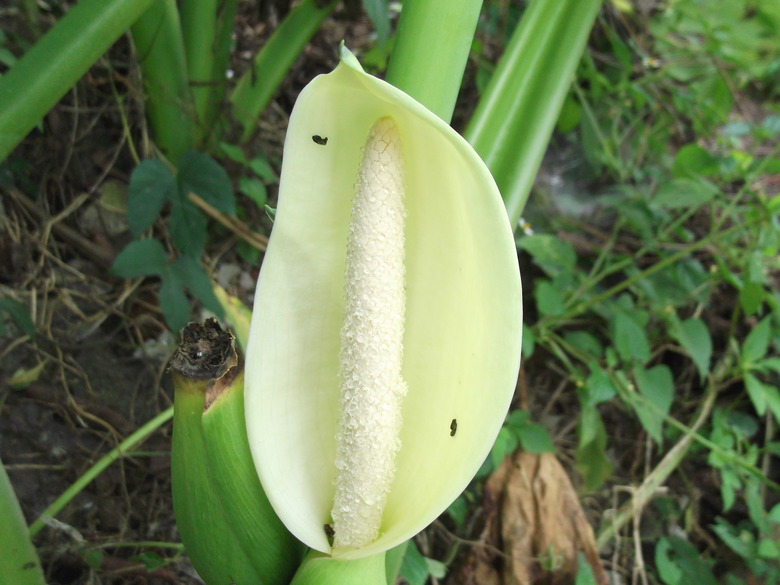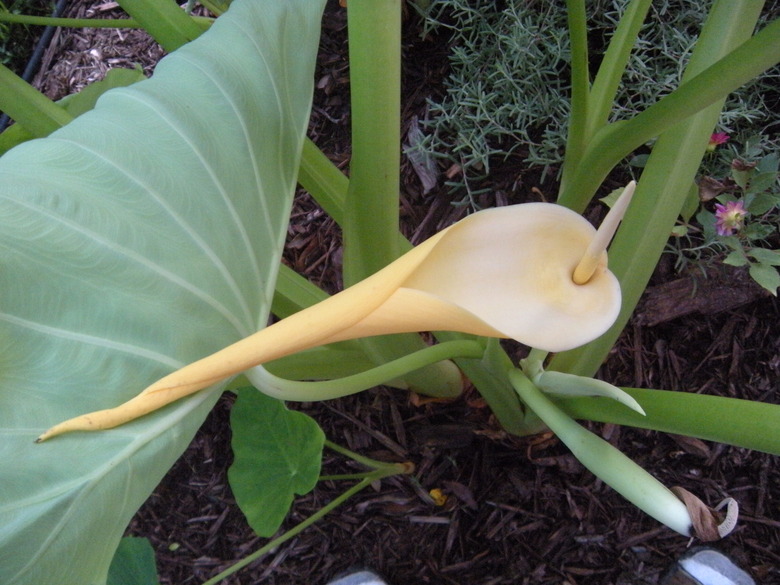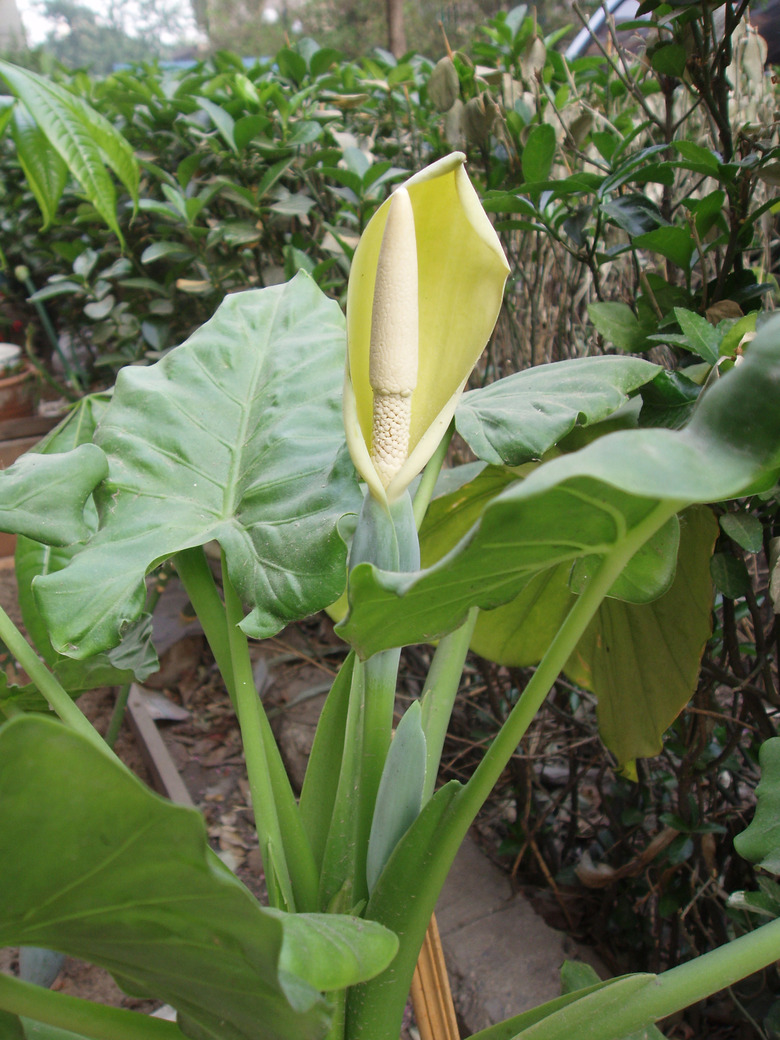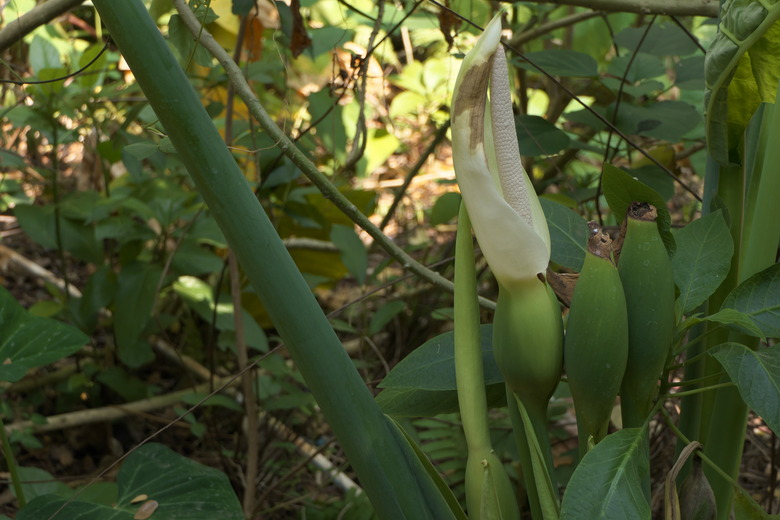Elephant Ear Plant Bloom Times
Several species of tropical plants in the Araceae, or arum, family that have oversized heart-shaped leaves are known as "elephant ears."
While these are flowering plants, it is rare to see an elephant ears plant with flowers outside of its native habitat and even rarer for indoor plants to bloom. Instead, these species are usually grown as foliage plants for their huge leaves.
Tip
The flowers of elephant ear plants resemble calla lilies.
Characteristics of Elephant Ear Flowers
Plants in three distinct genera are known commonly as elephant ears. These plants grow from fleshy, edible underground roots. These elephant ear bulbs are known as corms.
Like other plants in the arum family, elephant ears flowers consist of a spadix, which is a flower spike called an inflorescence that is covered in tiny flowers, and a bract called a spathe that looks like a leaf and surrounds the spadix. These flowers are reminiscent of calla lilies, which are also in the Araceae family.
Tip
Elephant ears plants seldom flower outside of their native habitat.
Types of Elephant Ears
Let's go over each genus of the plants known as elephant ears and some of the species that belong to each.
Colocasia
Colocasia species are native to Asia and other Pacific islands.
**Wild Taro:** Wild taro (Colocasia esculenta, zones 8 to 11), the fleshy, starchy root of which is used in cooking in tropical parts of the world, is sometimes referred to as elephant's ear. All parts of this plant are toxic when raw due to the presence of calcium oxalate crystals.
The flowers of this plant are a yellowish white color. On the rare occasion that the plant flowers in cultivation, the blooms are usually hidden by the large leaves.
Wild taro has become invasive in many parts of the U.S.
**Giant Elephant's Ear:** The giant elephant's ear (Colocasia gigantea, zones 8 to 10) has flowers similar to those of wild taro. When it does bloom, this elephant ear blooms from April to June.
Alocasia
There are approximately 80 species of plants in the genus Alocasia, and they are also known as elephant ears. These plants are native to Asia and Australia and are closely related to plants in the Colocasia genus.
These plants can survive winters only in USDA hardiness zones 10 and 11. Outside of this range, these plants can be grown as foliage houseplants.
**Giant Taro:** Like taro, the giant taro (Alocasia macrorrhizos, zones 9 to 11) is also cultivated for its edible root. This species blooms throughout the year in its native range and has greenish flowers. It is also known as upright elephant ears.
Xanthosoma
Plants in the genus Xanthosoma are native to South America have also been given the common name "elephant ears."
**Tannia:** Native to South America, tannia (Xanthosoma sagittifolium, zones 8 to 10), has flowers that consist of a greenish-white spathe that surrounds a white spadix. Bloom time is in the summer in July and August, however, it is very rare for this plant to flower.
You can also grow tannia in a container kept outside in warm winter and overwintered indoors. Tannia has become an invasive species in Florida.
References
- University of Wisconsin-Madison: Elephant Ears
- Missouri Botanical Garden: Colocasia esculenta
- Missouri Botanical Garden: Alocasia (group)
- North Carolina State Extension: Colocasia esculenta
- Missouri Botanical Garden: Xanthosoma sagittifolium
- Missouri Botanical Garden: Colocasia gigantea
- Missouri Botanical Garden: Alocasia macrorrhizos



